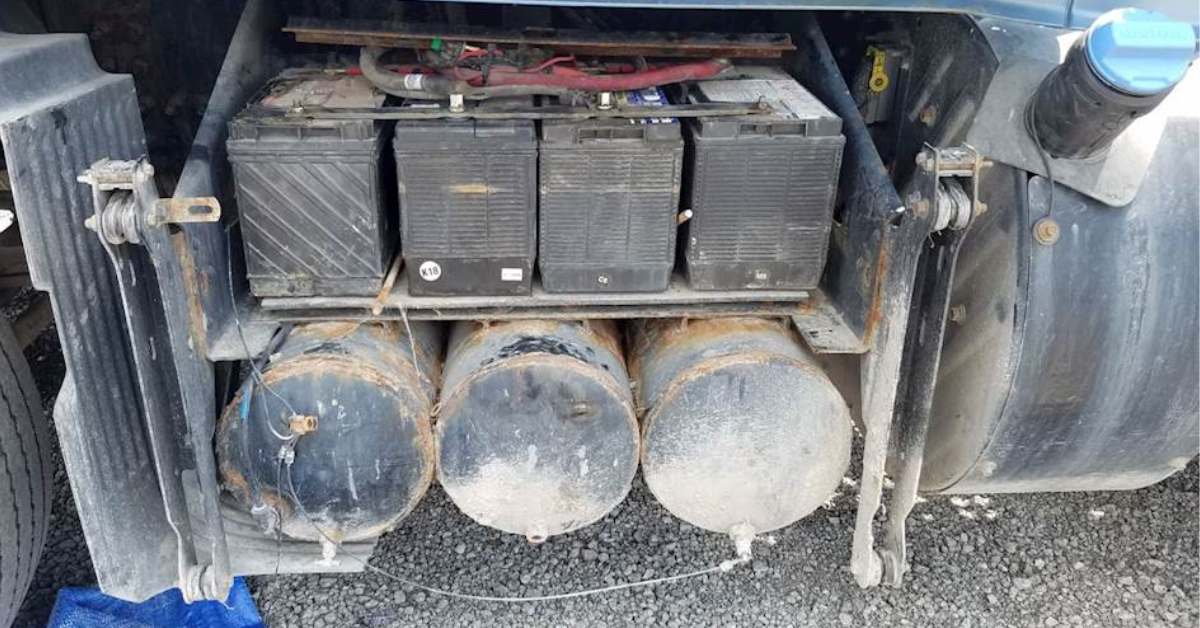How Many Batteries Does A Semi Truck Have

The question of how many batteries a semi-truck has isn't as straightforward as you might think. While the simple answer is usually four, the exact number can vary based on several factors, including the truck's make, model, engine, and the types of accessories it's equipped with. Let's dive into the specifics to understand why.
The Standard Setup: Four Batteries
In most modern semi-trucks, you'll find a bank of four 12-volt batteries wired in parallel. This configuration effectively creates a single, powerful 12-volt system with increased amperage. The primary reason for this design is to provide the significant electrical power required to start the massive diesel engines found in these vehicles. Diesel engines, with their high compression ratios, demand a much larger starting current than their gasoline counterparts.
Think of it like this: a typical car battery might provide around 600-800 cold cranking amps (CCA). A semi-truck's diesel engine, especially in cold weather, can require upwards of 1000 CCA or more to turn over. The four-battery setup ensures that this high demand is met reliably.
The batteries are typically located in a battery box, often situated on the side of the truck, near the fuel tanks. This location provides easy access for maintenance and replacement.
Why Multiple Batteries?
Using multiple batteries in parallel offers several advantages over using a single, larger battery:
- Increased Reliability: If one battery fails, the others can still provide enough power to start the truck (though it's not recommended to rely on this). This redundancy is crucial for long-haul truckers who can't afford breakdowns in remote locations.
- Easier Replacement: Replacing smaller, lighter batteries is significantly easier and safer than handling one massive, heavy-duty battery. This is a significant consideration for mechanics and owner-operators performing their own maintenance.
- Cost-Effectiveness: In some cases, purchasing multiple smaller batteries can be more cost-effective than a single, specialized high-capacity battery.
- Easier to find: More common sizes make it easier to get a replacement battery.
Factors Affecting Battery Count
While four batteries are the norm, several factors can influence the actual number installed:
- Auxiliary Power Units (APUs): Trucks equipped with APUs, which provide climate control and electrical power when the main engine is off, may have additional batteries dedicated to powering the APU. These batteries can be separate from the starting batteries and are often deep-cycle batteries designed for prolonged discharge and recharge cycles.
- Heavy Electrical Loads: Trucks with numerous electrical accessories, such as inverters, refrigerators, or specialized lighting, might require additional batteries to handle the increased power demand.
- Engine Size: Some very large diesel engines might demand a higher starting current, necessitating more than four batteries.
- Severe Service Applications: Trucks operating in extremely cold climates or under severe service conditions might benefit from additional batteries to ensure reliable starting.
- Hybrid Systems: While still relatively uncommon, some hybrid semi-trucks utilize entirely different battery systems, often involving high-voltage lithium-ion batteries in addition to or instead of traditional lead-acid batteries.
Battery Maintenance and Care
Proper battery maintenance is crucial for ensuring reliable starting and extending battery life. Key maintenance tasks include:
- Regularly checking battery terminals: Clean any corrosion buildup with a baking soda and water solution. Corrosion can impede electrical flow and reduce battery performance.
- Ensuring proper charging: Overcharging or undercharging can damage batteries. Ensure the truck's charging system is functioning correctly.
- Load testing: Periodically load test the batteries to assess their health and identify any weak or failing batteries. A load test simulates the high current draw of starting the engine.
- Keeping batteries clean and dry: Dirt and moisture can create a conductive path, leading to self-discharge.
- Using a battery maintainer: If the truck is stored for extended periods, use a battery maintainer to prevent discharge and sulfation, a buildup of lead sulfate crystals that reduces battery capacity.
In conclusion, while the typical semi-truck uses four 12-volt batteries for starting its diesel engine, the exact number can vary. Factors such as the presence of an APU, the demands of electrical accessories, engine size, and operating environment all play a role. Understanding these factors and practicing proper battery maintenance will help ensure reliable operation and prolong the life of your truck's battery system.
